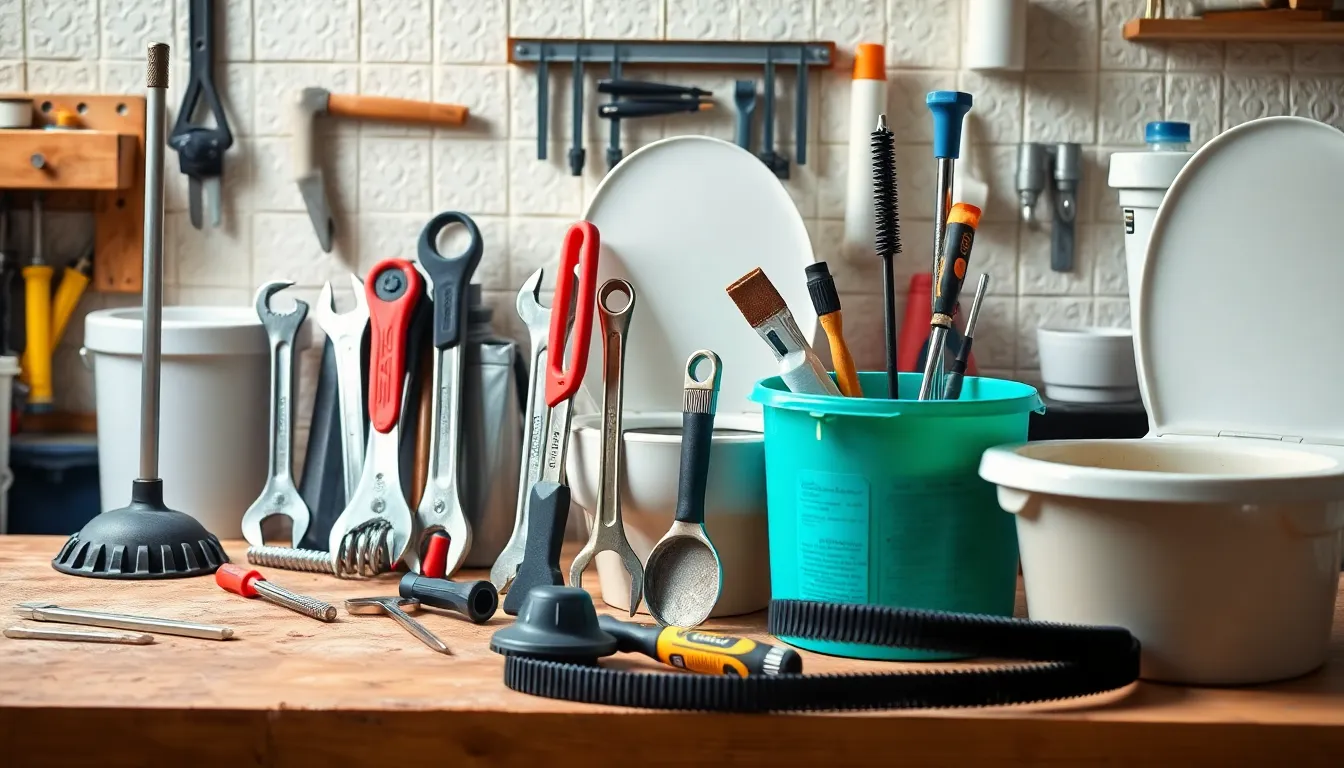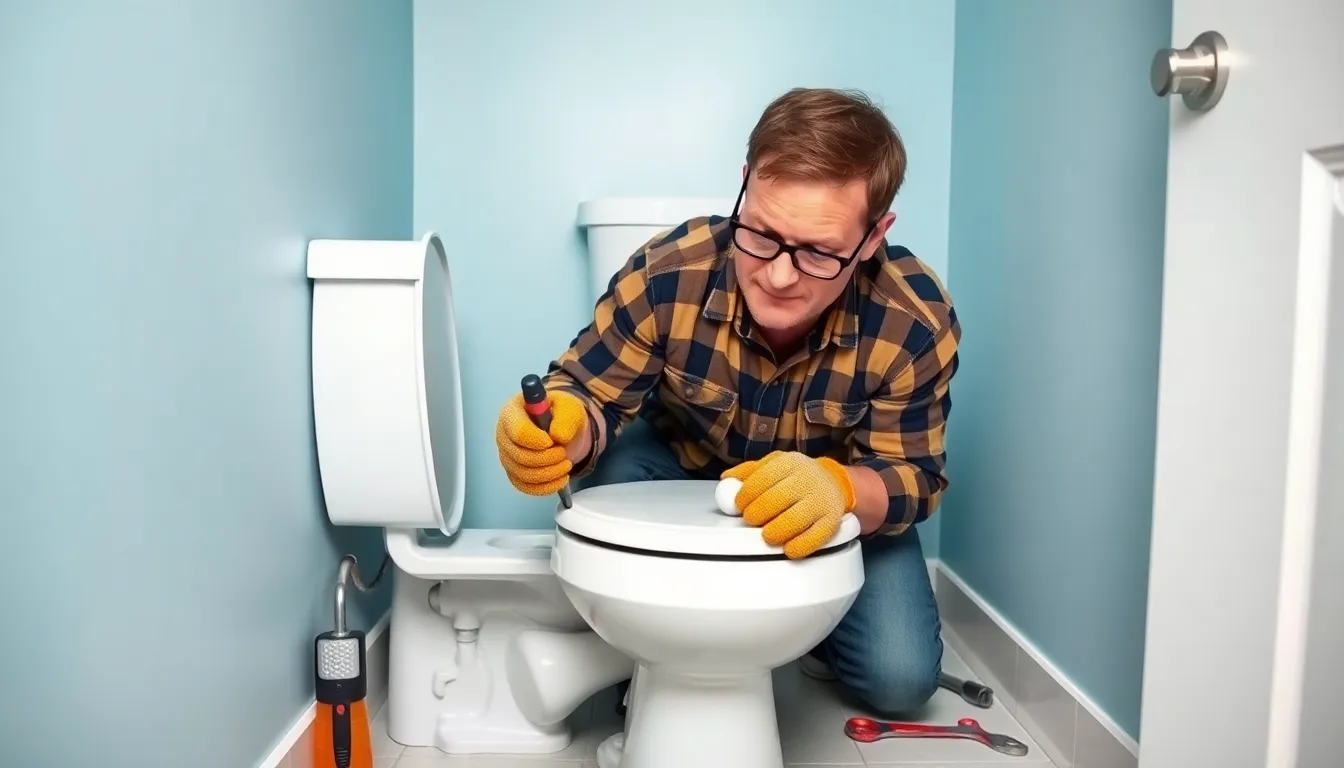When a toilet goes rogue, chaos can ensue. Picture this: it’s the middle of the night, and suddenly, the bathroom sounds like a scene from a horror movie. Water’s gushing everywhere, and panic sets in. Fear not, because toilet repair isn’t just for the plumbing pros. With a little know-how, anyone can tackle these common issues without losing their sanity—or their sense of humor.
Table of Contents
ToggleCommon Toilet Issues
Many homeowners face toilet problems, particularly clogs and leaks. Understanding these issues can simplify the repair process.
Clogs and Blockages
Clogs occur when waste accumulates, obstructing water flow. Various items, including toilet paper, feminine products, or foreign objects, often lead to this issue. A plunger can usually dislodge minor blockages. For tougher clogs, a toilet auger is effective in breaking up the obstruction. Regular maintenance, such as avoiding flushing non-biodegradable items, can prevent clogs from forming in the first place. Heed signs like slow draining to tackle potential issues early.
Leaks and Drips
Leaks in toilets can stem from worn seals or faulty flappers. These leaks often lead to water waste, increasing monthly utility bills. Signs include puddles around the base or constant water running in the tank. Replacing the wax seal or adjusting the flapper typically solves these problems. Checking connections and tightening loose screws helps prevent future leaks. Performing routine inspections ensures any leaks get addressed before causing damage to the flooring.
Tools Required for Toilet Repair

To tackle toilet repair effectively, having the right tools makes a significant difference. Essential and optional tools aid in resolving common issues quickly and efficiently.
Essential Tools
A plunger stands as the most vital tool for addressing clogs. Adjustable wrenches assist in loosening or tightening bolts. Additionally, screwdrivers streamline the replacement of various components. A toilet auger helps remove stubborn blockages deeper within the plumbing. Lastly, a bucket catches any spills during repairs, ensuring a clean workspace.
Optional Tools
Sealant or plumber’s tape can effectively prevent leaks in joints and fittings. If replacing parts, a replacement kit simplifies the process by providing all necessary components. A level assists in ensuring components are aligned correctly. Using a flashlight helps illuminate darker areas around the toilet for better visibility. Having a set of rubber gloves keeps hands protected during repairs.
Step-by-Step Repair Guides
To fix common toilet issues, follow these straightforward guides that help homeowners address clogs and leaks effectively.
Fixing Clogs
Address toilet clogs with a plunger first. Position the plunger over the drain hole, ensuring an airtight seal. Push down firmly, then pull up quickly to create suction. If clogs persist, utilize a toilet auger by inserting it into the drain and turning the handle to break up stubborn blockages. Sometimes, removing the toilet altogether may be necessary for severe blockages. When doing so, ensure the water supply is turned off and the toilet is drained to avoid spills. Regular maintenance through periodic inspections can prevent clogs from developing over time.
Repairing Leaks
Identify leaks by inspecting for puddles around the toilet base. A constant flow of water in the bowl often signals a problem. Start by checking the flapper inside the tank; replacing it may resolve leaks caused by worn components. For leaks at the base, tighten the bolts securing the toilet to the floor. If puddles persist, look for issues with the wax seal under the toilet. Replacing the wax seal requires removing the toilet, so make sure to have a new seal ready. Routine checks can help catch leaks early and prevent costly water bills.
Preventative Maintenance Tips
Preventing toilet issues saves time, money, and stress. Regular maintenance keeps toilets functioning smoothly and efficiently.
Regular Inspections
Homeowners should conduct routine inspections every few months. Check for signs of leaks, like moisture around the base or continuous tank filling. Ideally, observe the water level in the tank to ensure it remains stable. Inspecting bolts and seals regularly helps identify wear or damage early. If any parts appear faulty, they can be replaced before more significant problems arise.
Best Practices for Usage
Using toilets properly prevents unnecessary clogs and damage. Avoid flushing items like paper towels, feminine products, or excess toilet paper. Each person should limit the amount of toilet paper used per flush. Encourage everyone in the household to dispose of inappropriate items in the trash. Educating family members about proper usage contributes to longer-lasting toilets.
Toilet repair doesn’t have to be a daunting task. With the right tools and a bit of knowledge, homeowners can confidently tackle common issues like clogs and leaks. Regular maintenance and inspections are key to preventing future problems and saving money on repairs. By understanding how to address these challenges, individuals can maintain a smoothly functioning toilet and avoid the chaos of unexpected malfunctions. Embracing a proactive approach ensures that toilets remain reliable fixtures in the home.



